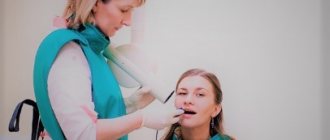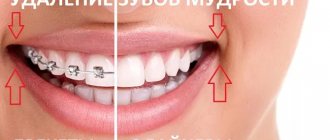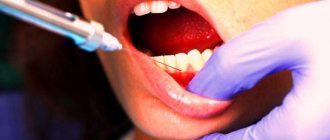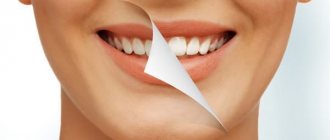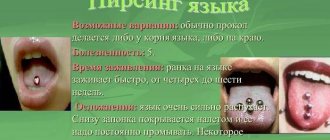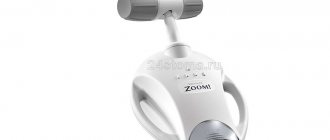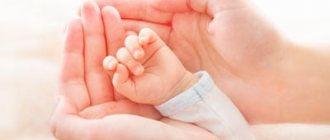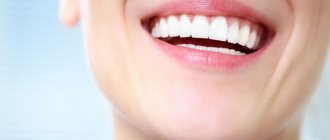X-ray and breastfeeding
X-rays and breastfeeding (BF) are not mutually exclusive events. It is not necessary to wean your baby to take an x-ray. Irradiation does not cause changes in the composition of mother's milk. Immediately after the x-ray examination, you can start feeding again.
If there is evidence for a nursing mother, an x-ray can be taken. The composition of breast milk remains unchanged even when X-rays are performed with contrast. The contrast agent formula contains mainly iodine molecules, which are excreted from the body naturally unchanged.
If a woman had an X-ray of her lungs during breastfeeding, then doctors may recommend not feeding the child for 2-3 hours after the examination.
Injuries, bruises, fractures are indications for a chest scan. The image allows you to determine the location of the damage and its complexity. Such an examination may be needed at any stage of feeding.
During pregnancy and lactation, a woman faces calcium deficiency, which manifests itself, for example, in intense toothache and other similar problems. To decide on a dental treatment algorithm, experts advise taking an X-ray of the tooth during breastfeeding.
How to Minimize Exposure to Harmful Rays
Medical practice involves taking x-rays at different stages of life, including during guarding. To reduce the negative impact of radiation, the most effective method is to wean the baby from the breast during the procedure and for several days after it. If this is not possible, then doctors advise drinking a glass of wine (red) immediately after the procedure, and for the week following that day include the following foods in your diet:
- cottage cheese, sour cream;
- seafood delicacies;
- Walnut;
- raw carrots;
- pork, but not too fatty.
For a nursing woman, the consumption of wine will have to be excluded, but the remaining ingredients can be included in the menu without fear.
How can a nursing mother prepare for x-rays?
Breastfeeding is not a reason to refuse x-rays. Mothers often worry about its effect on lactation. The safety of the examination has been proven; it does not affect the baby or breast milk. Preparation for the procedure consists of observing the following rules:
- Before the examination, feed the baby,
- express the required amount of milk if breastfeeding is interrupted for a while after the examination,
- during an X-ray examination without a contrast agent, you do not need to express your milk; you can feed the baby immediately after the procedure is completed,
- Make sure that you wear a protective lead apron during fluoroscopy.
Some doctors recommend withholding feeding if a contrast agent has been used. The safety of this procedure has not been fully proven.
Why are breastfeeding women afraid to have their teeth treated?
Any step of a nursing mother can affect the health of the child, so before performing the simplest usual actions, she evaluates whether this will harm the baby. When visiting a dentist, three things may cause concern:
- To make a diagnosis, you may need an x-ray of the diseased tooth;
- During treatment, filling materials and anesthesia medications are used;
- After the procedure, a course of antibiotics may be prescribed.
A young mother may fear that x-rays and medications will make breast milk unsuitable for feeding, and just in case, she may completely refuse dental treatment and postpone going to the doctor until the time when the baby is weaned.
Principle of examination
Every mother worries about the health of her child. There is a prejudice that x-rays are dangerous during pregnancy and breastfeeding. This opinion is wrong. If there are indications for an x-ray examination, it is worth undergoing it.
X-rays of the teeth, chest, and lungs are performed on many women during the postpartum period while breastfeeding. During the examination, a special apron is worn to limit the effects of radiation. Fluorography is safer than x-rays.
The examination operates on the principle of analyzing the nature of the passage of X-rays through body tissue. The radiation dose is minimal. After the procedure is completed, the effect on milk and the body stops.
Alternative Research Methods
In some cases, minimal radiation doses can lead to negative consequences. Therefore, if it is possible to make a diagnosis using alternative research methods, then it is better to resort to ultrasound. And if the results obtained are not enough, then a more expensive research method is used - MRI.
Women at risk and those whose babies are susceptible to allergies should approach such diagnostic methods with caution. But you shouldn’t neglect your health, so if the procedure is recommended and justified, then it is better to take an x-ray and, if possible, protect the baby as much as possible. After all, if the mother is healthy, then the baby will grow strong and healthy.
Compatibility with lactation
Breast problems are often associated with lactation and cause the child to be weaned from feeding. Mastitis can be accompanied by the presence of various formations. To diagnose this type of abnormality, contrast x-rays are prescribed.
X-rays are not a reason to pause feeding the baby. It is prescribed for suspected diseases of hard and soft tissues. X-ray allows you to determine the condition of internal organs and bone structures. Modern devices have a gentle effect.
X-rays during breastfeeding may be prescribed in the maternity hospital to rule out tuberculosis. Such an examination is the most effective method for diagnosing the pulmonary form of the disease, which poses a serious risk to the child. The procedure does not take much time and affects exclusively the mother’s body.
How does x-ray work on breast milk?
Often women are afraid that breastfeeding a child after an x-ray is impossible. This question remains open. Some doctors also take the position that X-rays negatively affect lactation. After a contrast x-ray, it is advised to refrain from feeding for 24 hours.
Modern doctors reassure mothers and believe that there is no need to express or stop feeding. A regular x-ray does not change the composition of breast milk. The exposure to radiation ends after the end of the procedure, which usually lasts 3-5 minutes.
An x-ray with a contrast agent is examined separately. It is usually used for detailed diagnosis of internal organs. Barium does not enter the bloodstream and, accordingly, into breast milk. Iodine-based contrast is injected into the blood, so minimal passage into milk still occurs. The drugs are administered in small volumes and are eliminated from the body naturally. Despite this, some doctors recommend expressing milk before the examination, and then taking a break from feeding for a day. This will help maintain the quality of breast milk.
Is it possible to feed after an x-ray?
Before an x-ray, many women worry whether it is harmful for lactation, and wonder when they can start feeding. There are no consequences for the child after such a procedure.
Radiation during the examination is directed only at the woman, so after the procedure you can start breastfeeding immediately. Its quality remains unchanged.
A contrast examination is carried out with a small amount of the active substance, which is used in the form of a solution. In this case, there is a possibility of the drug getting into the milk. In this regard, some doctors recommend not feeding the child after the scan for several hours to a day.
Indications for tooth extraction during lactation
During the procedure, drugs are used that can penetrate into mother's milk. If it is possible to postpone the date of the operation, then extirpation is carried out after the child is transferred to artificial nutrition. A dental unit is removed urgently during a purulent inflammatory process, as it contributes to the spread of infection throughout the body.
In what cases is surgery necessary:
- suppuration of a cyst, abscess, periostitis;
- unsteadiness due to periodontitis, periodontal disease of the third, fourth degree;
- odontogenic osteomyelitis, sinusitis, phlegmon;
- tooth root fracture;
- pulpitis, which cannot be cured due to the complexity of the canals;
- impacted figure eight, complicated growth of the third molar, pressure on neighboring teeth;
- deep caries that affected the root.
Unscheduled extraction is also performed in cases of severe, persistent pain.
The procedure has contraindications, including acute respiratory infections, chronic diseases in the acute stage, oral infections, sinusitis, severe pathologies of the liver, kidneys, heart, blood vessels, leukemia, bleeding disorders, and mental disorders.
Benefits of radiography
The radiation research method is widely used both for diagnostic purposes and for assessing the results of treatment. The advantages of this research method are obvious:
- high information content and a wide range of indications;
- simplicity and speed of obtaining results;
- affordable cost of research;
- lack of special preparation on the part of the patient (in most cases);
- The images can be saved and used for consultation with a related specialist.
What device do you use for radiographic examination?
The Clinic on Komarova uses the latest generation universal X-ray complex - AGFA DX-D 300 (2016), the only one in the Far East. Modern digital technologies make it possible to obtain images of the highest quality with minimal radiation exposure, which have undeniable diagnostic effectiveness.
For comparison, when performing digital chest radiography AGFA DX-D 300, the radiation exposure is only 0.03 mSv (millisievert) per procedure, which is 17 times lower than with conventional fluorography (0.5 mSv), 10 times lower than with conventional radiography (0.3 mSv) and 2 times lower than with digital fluorography of the chest organs (0.05 mSv).
One of the unique features of the AGFA DX-D 300 is an individual approach to research. The German company has thought through everything to improve the level of patient comfort. The maximum flexibility and motorization of the AGFA DX-D 300 allow the equipment to independently take a position in space relative to the patient during the examination. This unique feature makes it easy to carry out a wide variety of examinations on any population, be it children, the elderly or patients with limited mobility.
What signs indicate the presence of pathology?
The peculiarity of an x-ray image is expressed in the fact that the result obtained on the film is displayed in the form of a negative image: the denser the tissue, the lighter it will be in the image. That is, in place of bones there will be white areas, in place of soft tissues there will be gray areas, and layers of air will be black.
In this regard, the doctor calls the bright areas in the image darkening; they indicate the presence of pathological formations. For example, if such areas are found in the lungs, they will indicate pneumonia, in other organs - the presence of a tumor, stones and other processes.
MRI during feeding
This procedure is prescribed to identify:
- dysfunction of the nervous system;
- pathologies of congenital cerebral vessels;
- degenerative brain diseases;
- breast cancer;
- tumors in the liver, kidneys, tumors in the brain, pancreas;
- diseases of the inner ear, pituitary pathologies, sinuses;
- infectious lesions of soft tissues, bone apparatus, joints, spine.
The procedure itself does not have a negative effect on the milk produced, but this effect is characterized by the contrast agent - gadopentetic acid, which clarifies the result of the study.
Therefore, doctors advise, if possible, to stop breastfeeding for a day or two after the x-ray.
If this is not possible, then you can feed the baby without much fear for his health. If we calculate that only 1% of the contrast agent is released into mother's milk, and the baby's body absorbs 1% of this amount, then when a woman receives a dose of 0.2 mmol/kg, the baby will be exposed to a substance in the amount of 0.00008 mmol/kg . This is a very small dose that is not capable of harming the baby , and his body will cope with this effect.
